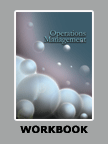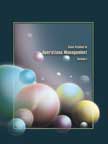|
<< Previous
Background Note Contd...
|
His powerful vision inspired the steel and power industries in the country and
set the foundation for technical education and philanthropy. In 1900, Jamsetji
got the approval for building a steel plant.
In 1904, Jamsetji passed away in
Germany, but his dream was implemented by his son, Dorabji Tata. The Tata Iron
and Steel Company was formed in 1907, in Jamshedpur, in Bihar. In 1910, the Tata
Hydro Electric Power Supply Company was established.
In 1938, JRD Tata was appointed as the head of Tata group. JRD, one of India's
most respected business leaders, guided the group for well over half a century.
|
|
In 1956, he initiated a programme of closer "employee association with
management" to give workers a stronger voice in the affairs of the company.
Five core values - Integrity, Understanding, Excellence, Unity, and
Responsibility directed the group's growth and businesses.
Over time, the Tata group became India's largest business group. The group
diversified into metals, automobiles, energy, engineering, chemicals,
consumer products, finance, international operations, information
technology, and agri-industries.
In 2003, the Tata Group had a presence in
seven key industry business sectors - materials, engineering, energy,
consumer products, chemicals, communications and IT, and services. The group
consisted of some 80 companies.
|
|
The materials business included basic steel products, tubes, bearings, and
agri tools. The engineering business included passenger cars, utility
vehicles, trucks and buses, construction equipment, industrial machinery and
commercial cooling equipment.
The energy business included hydroelectric power projects. The consumer
products business included the group's tea, coffee, food products, home
appliances, watches and clocks, jewellery, garments and home security
solution, ceramics, water coolers and air conditioners. The chemical
business included agri products like insecticides, fungicides and
herbicides. |
The IT and telecommunications business included the group's
software, telecommunications, other IT-related services, and automation and
control system offerings. The services business included the group's financial
services, mutual funds, hospitality, publishing and export offerings.
Excerpts >>
|
|



